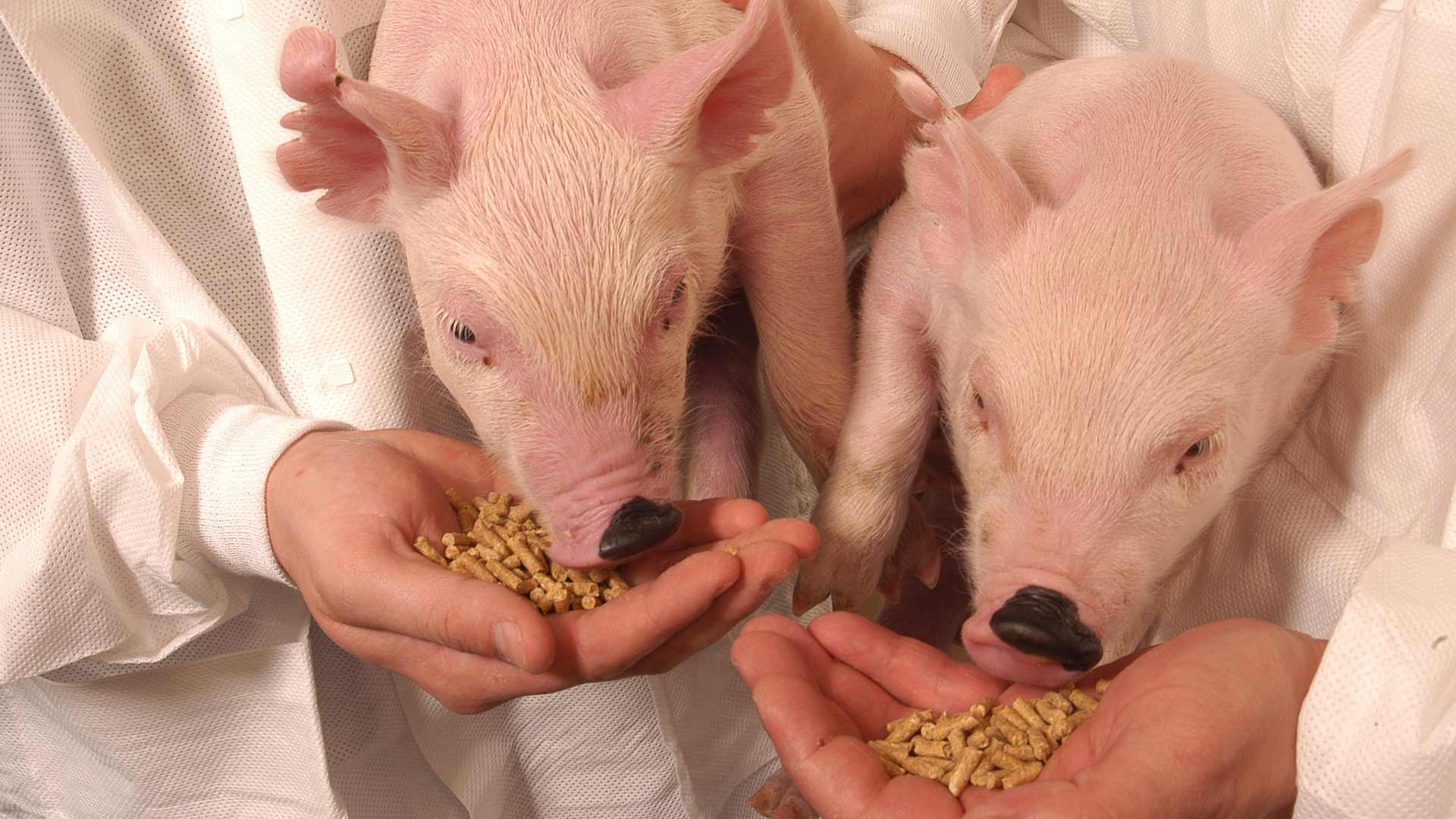Marshall, Minn. — Jim Moline wants to make soybean meal easier eatin’.
He is co-founder and president of Midwest Ag Enterprises, which manufactures and exports specialty livestock feeds. With help from AURI, the Marshall company is developing an economical process to make high-protein, digestible soybean meal. Hydrolyzed soybean meal would offer an alternative to expensive protein sources, such as fish meal, in baby pig, turkey and aquaculture diets.
If it’s successful, the company’s new process could add value to ordinary soybean meal, expand markets for Minnesota soybeans and improve profits for livestock producers, says Denny Timmerman, AURI project director. “Everybody would get something out of this deal.”
Fished out
Highly-digestible fish meal has long been a staple of nursery pig and poultry diets. But the wild catch of menhaden — a small, herring-like ocean fish that’s the main source of U.S. fish meal — has been sharply depleted, Timmerman says. “The fish have gotten scarce because of heavy demand,” causing fish meal prices to triple in recent years. “That’s the driver behind the livestock industry trying to discover lower-cost protein alternatives.”
Standard soybean meal, which contains about 44 percent protein, is an excellent source of amino acids, the building blocks of protein. But soybeans also contain fiber and complex sugars, called oligosaccharides, which interfere with digestion and nutrient absorption in young pigs and other single-stomach animals. (Think gas!)
“There’s value to be captured by removing the anti-nutritional components of soybean meal and changing the protein structure to make it more available to animals,” says Doug Root, AURI scientist.
Although the technology exists to make soybean meal products that are 60 to 90 percent protein, it’s very expensive to do, Root says. “Our goal is to get close to 60 percent protein soybean meal at prices appropriate for livestock feed.”
“We’re really enthusiastic about Midwest Ag Enterprises taking on this project,” he says. “They have great experience in the industry. They know what they are doing, and they do it well. Also, they are able to move quickly.”
High protein demand
Midwest Ag Enterprises produces and markets a variety of high-protein feeds for young pigs. The company operates a manufacturing plant in northwestern Iowa.
“There’s big demand for high-quality protein products that fit into livestock diets,” says Moline, who has a track record of seizing business opportunities.
Throughout Asia, the livestock industry is advancing rapidly, he says. Animal genetics, housing and diets are all improving, creating a need for “better feed ingredients.” Demand is especially strong in China, “which has over half of the world’s pigs, a growing middle class and a huge demand for meat.”
Moline, who travels to Asia several times a year, sees a chance to supply hydrolyzed soybean meal to these burgeoning markets — if manufacturing costs can be lowered. “That’s when we approached AURI for help.”
Development and testing
Moline assembled a team of consultants, including AURI, to devise a cost-competitive process. The goal was to remove most of the soybean meal’s indigestible sugars and fiber and break up the protein molecules into smaller, more digestible pieces.
There are three ways to do that in the lab, says Root, who did the preliminary bench top trials: microbial fermentation, enzymatic digestion and chemical processing. But when it comes to scaling up a process from the lab to commercial volumes, “it’s all in the details.”
Midwest Ag Enterprises has been working for over a year to refine their proprietary manufacturing process. “This is new territory,” Moline says, “but we’re getting close.” The company expects to begin livestock feeding trials this winter.
Initially, the improved soybean meal — it doesn’t yet have a brand name — will be aimed at nursery pig producers in China, Vietnam, Thailand, South Korea and the Philippines — markets where the company already has a presence. The meal also has promise for poultry, pet food and aquaculture diets, Moline says. “Aquaculture is a huge and growing industry in Asia.”
The company plans to manufacture the meal at its Iowa facility. AURI is assisting with plant design and equipment evaluation. If the product takes off, a new processing plant is likely, Moline says. “We hope to be out front on this with something nobody else has.”
AURI & MIDWEST AG ENTERPRISES
Idea to opportunity: Find a protein feed source for nursery pigs and poultry to replace fish meal, which is decreasing in supply.
Outcomes: AURI staff helped Midwest Ag Enterprises identify a process to remove oligosaccharides, which interfere with digestion and nutrient absorption, from soy meal to make it an attractive feed option.
Funding partner: Minnesota Soybean Research & Promotion Council
